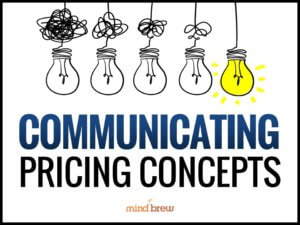Have you ever heard of the “Seven-Minute Miracle”?
No, this isn’t something you can buy off an infomercial. It isn’t a health product or an exercise regimen, and it won’t make you look younger or more beautiful.
Instead the Seven-Minute Miracle is the nickname for the cleaning process the TESSEI employees perform on more than 300 of Japan’s bullet trains, or Shinkansens, every day. It’s a “miracle” because for each train, these crews wipe down 1,700 individual tables, rotate every chair 180 degrees, collect the trash, open the curtains, wipe the windows, sweep the aisles, and otherwise tidy up the 17 carriages on each train. And they do it all in less than seven minutes, in full view of the passengers at the train station.
And, as you probably guessed, we think that the bullet train cleaning crew has a valuable lesson to offer pricing teams.
You see, the Japanese people didn’t always consider these cleaning crews to be miraculous. Instead, the work was seen as dirty, demeaning, and dangerous. The workers did their jobs out of public view. Morale was low, and several CEOs made the situation worse by instituting harsh punishments for those who committed minor infractions. And the passengers, who didn’t understand what was going on behind the scenes, frequently became irritated while waiting for their trains.
But then a new CEO came on the scene and introduced several reforms, including a new idea called “Shinkansen theater.” Instead of hiding the cleaning crews, he put them on display where everyone could marvel at their speed and efficiency. Passengers and employees alike began to see the cleaning process as a source of pride.
Like those cleaning crews, pricing teams often do their work outside of public view. It isn’t exactly dirty and dangerous, but pricing is often a mystery to most of the people in an organization. As a result, they might not value it as much as they should.
One way to improve this situation is to do exactly what the Japanese CEO did — turn your work into theater. No, we don’t think you should invite your co-workers to watch you set up spreadsheets (yawn), but we do think you should find some creative ways to share your work with the company. Maybe you make a presentation at a company meeting. Maybe you write an article for the corporate newsletter or collaboration site. Or maybe setup some regular or web meetings to explain to other departments what’s going on in pricing.
Increasing your team’s visibility within the organization can have a lot of positive benefits. When the organization values and understands your work, they are more likely to give you additional responsibilities and increase your budget. Management will become more likely to listen to your suggestions, and you’ll have a larger influence on the direction of the company. And assuming that you’re doing your job well, having a more data-driven, strategic approach should lead to improved revenues and margins, as well as competitive advantage.
In one of our popular webinars, Communicating Pricing Concepts, we share very useful and practical advice for increasing pricing’s visibility and helping others in the organization understand what pricing does.
You can also learn some tips in Advancing Your Careers in Pricing and Proving the Value of the Pricing Function.
Step out of the shadows and let the world see pricing in all its glory. You and your company will both be better off for it.















